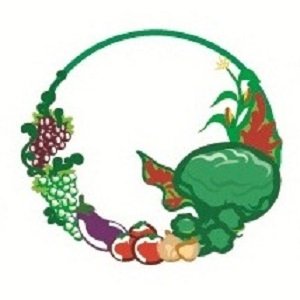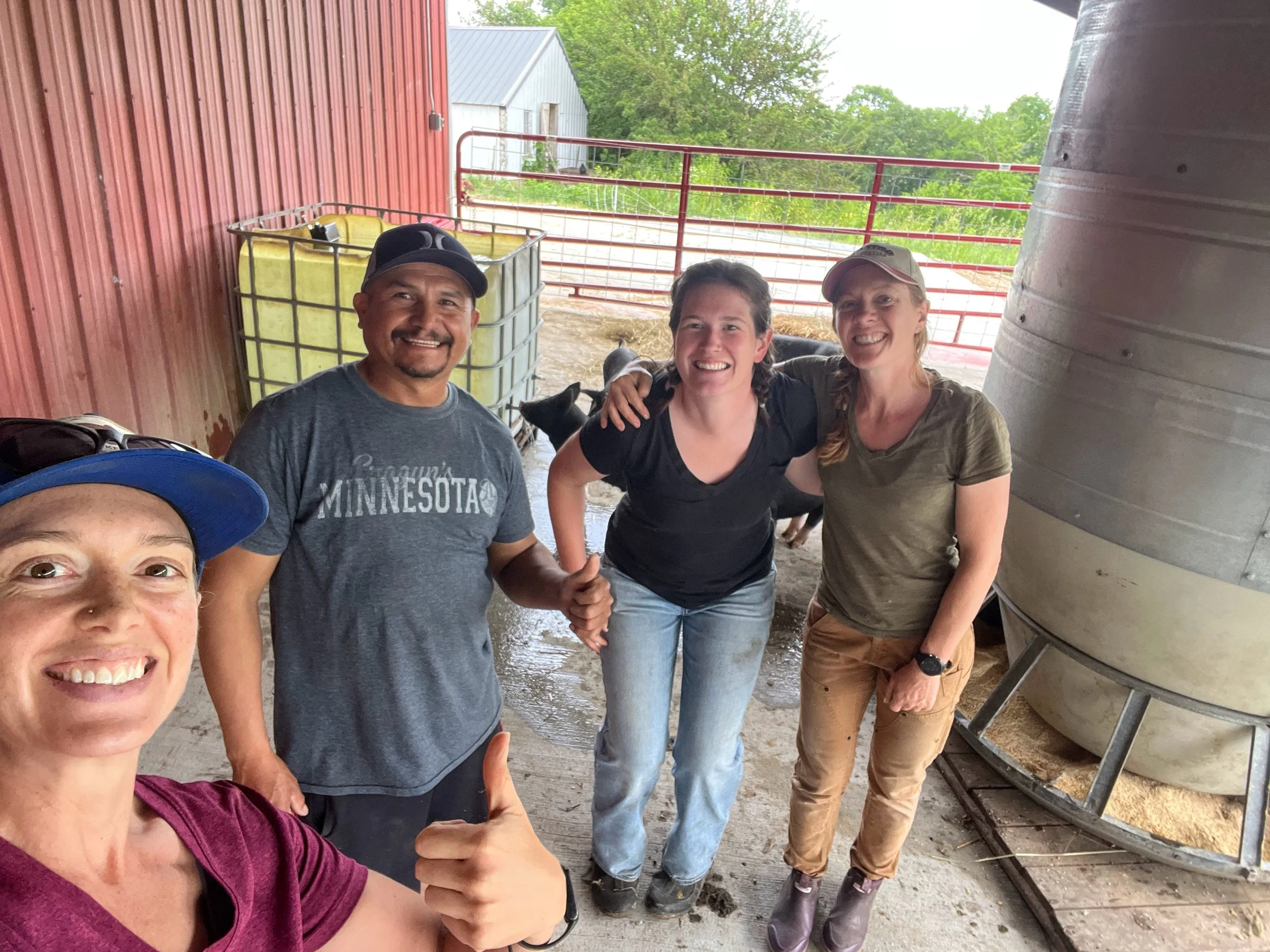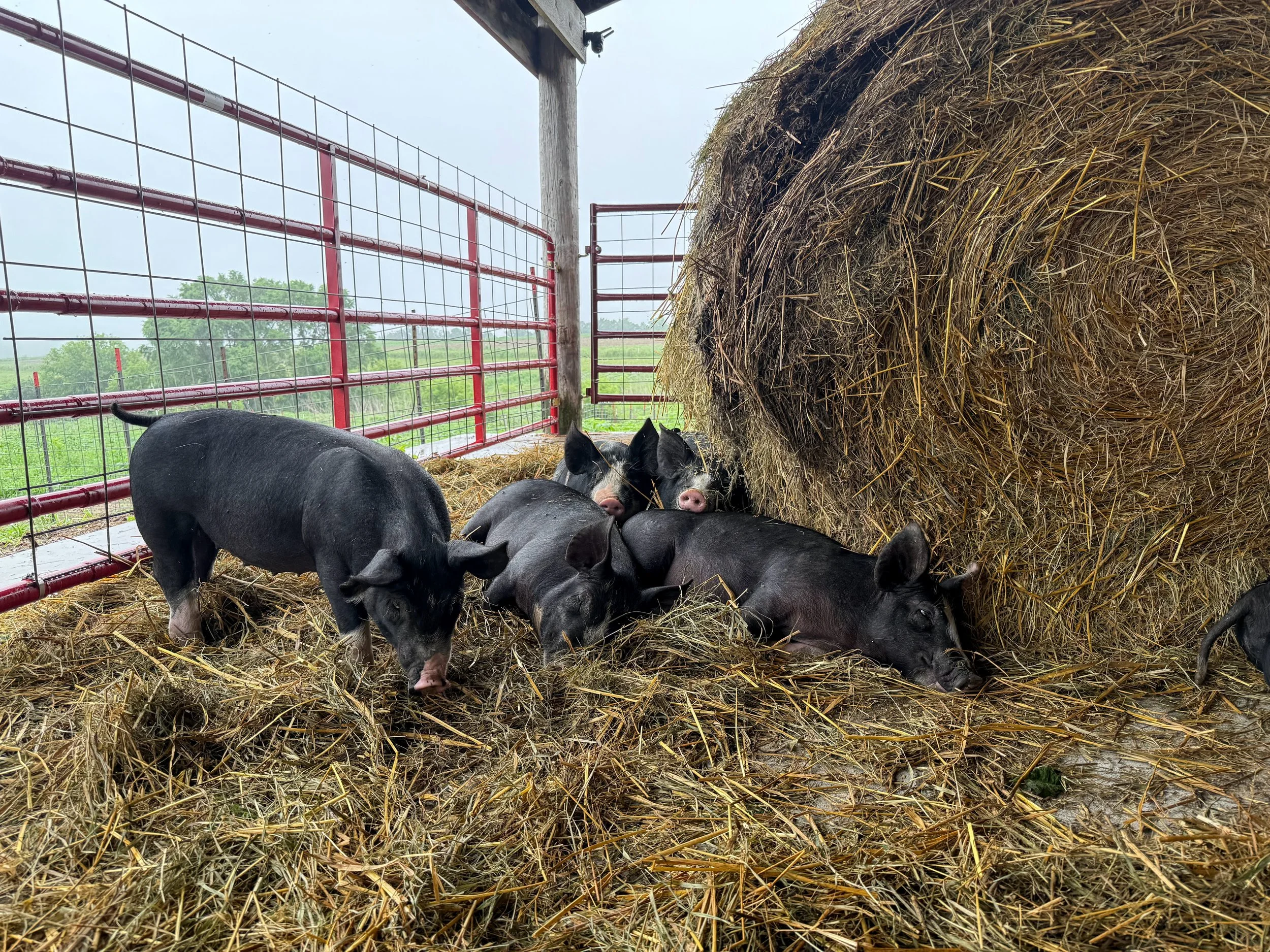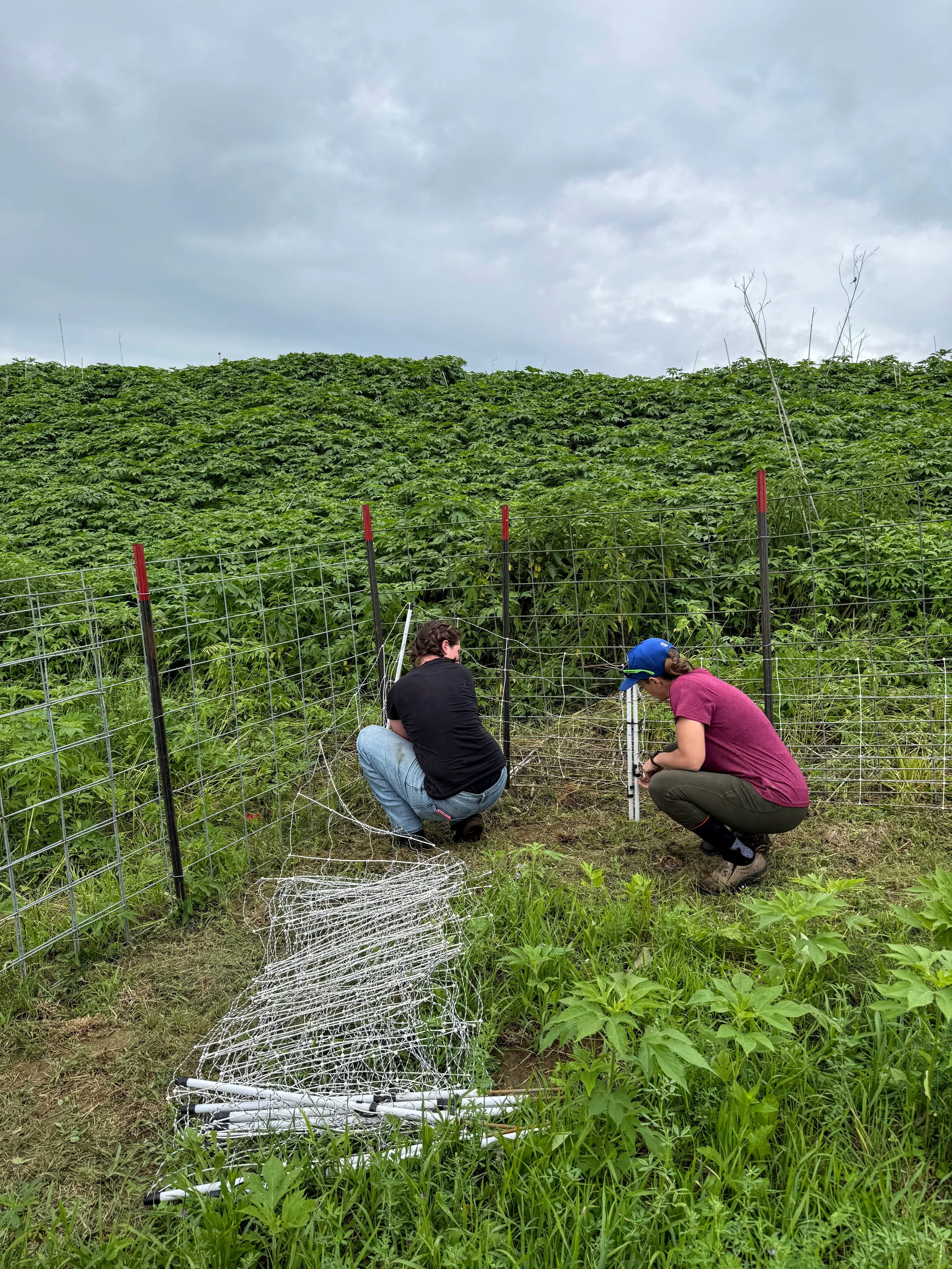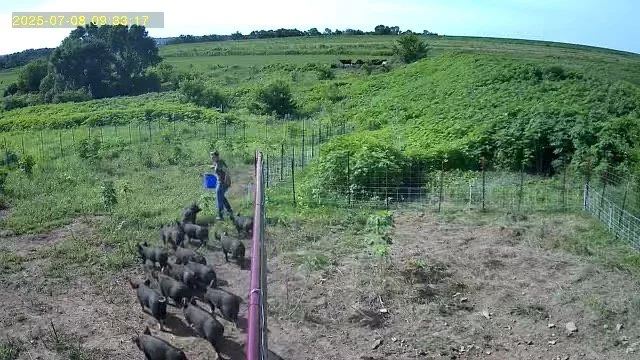Featherstone Pastured Pigs
Featherstone’s first group of pastured pigs has arrived! Farmer Abby had a busy month preparing for their arrival, with the close mentorship of Dayna Burtness from Nettle Valley Farm and help from Featherstone employees Molly Kelly and Lupe Gasca Hernandez, as well as many other Featherstone crew pitching in to help pound posts and finish the pig patio. Our pigs are located on our ridge top farm, known as the Peterson Farm, where we’ll be rotating them through approximately 5 acres of land that was previously rented by a neighbor for hay.
With advice from Dayna, we decided to use a “hub and spoke” layout for our rotational grazing paddock design. We have a covered home base area built into the east side of a pole shed. This is where the pigs always have access to fresh water, grain, straw bedding, and shade. It stays cool and breezy and this is where they spend most of their daytime hours napping and snacking. Off of this hub area we open gates to different pastures, contained by electronet fencing. They are able to come and go as they please between the pasture and their hub, and we will rotate them through the different paddocks as they forage and root up each section. It’s a really great design that allows us to avoid a lot of extra work moving water, feeders, and shade structures around to different pastures and gives the pigs freedom to move about as they please.
The first couple weeks with our pigs have been spent observing for any health issues (good news, they are very healthy so far!), bucket training, and electric fence training. The idea behind bucket training is that we want the pigs to follow us when we shake the bucket full of treats and call to them with “pig pig pig pig pig!”. This will make it easier to move them between paddocks and hopefully allow us to coax back any escaped pigs! Molly and Abby have been practicing almost every day, shaking a bucket of sunflower seeds and then giving them a taste, and they seem to be learning really fast. The other important training step is electric fence training. We built a secure hard panel fence yard before they arrived and set up our first electronet about 1’ inside of it. This allows the pigs to be free in the pasture and experience the electric fence without fear that they could run through it and escape. So far they are learning really well and mostly staying away from the fencing. This week we took down a couple panels, leaving only electronet on one side so we can observe how they do. We are hopeful they’ll be out in a new pasture with only electronet by the end of this week!
The pigs will become an integral part of our efforts to reduce food waste (an inevitable product of farming at any scale: damaged vegetables). We have already been feeding them damaged zucchini, cabbages, and lettuce and they have eaten all of it up. This has been an exciting learning experience that has only just begun. We’re looking forward to getting the pigs out to pasture soon, and they are ready to eat any and all overripe tomatoes when the time comes!

